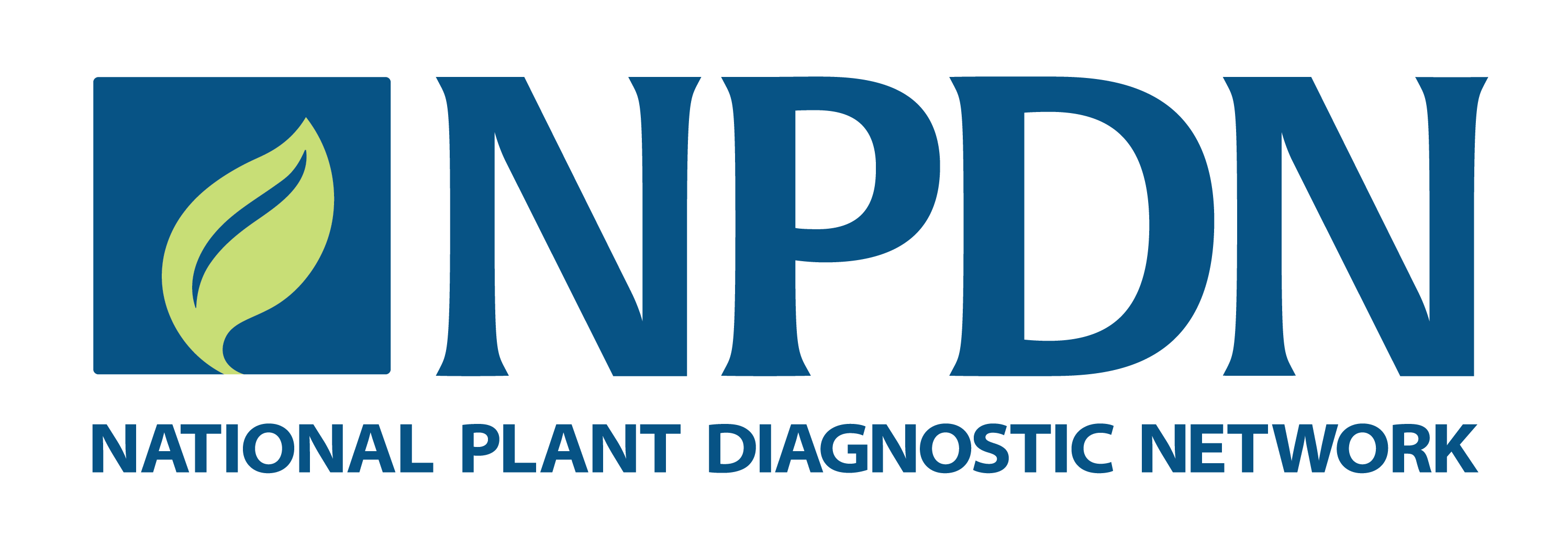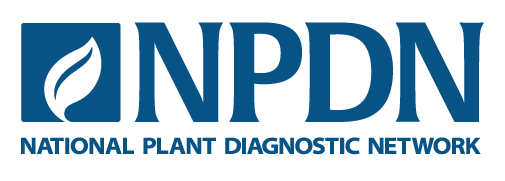NPDN is a consortium of 120+ plant disease diagnostic labs with the ability to quickly detect and accurately identify plant pests and pathogens and to communicate timely and accurate information.
Who are NPDN labs?
NPDN labs are plant disease diagnostic labs that have a cooperative agreement with NPDN or that have signed a collaboration agreement with us.
NPDN provides funds to certain plant diagnostic labs from land-grant universities and state departments of agriculture in every state and territory of the US. NPDN labs that receive funds from NPDN submit data to the NPDN National Data Repository.
We also have non-funded collaboration agreements with labs in most state departments of agriculture in the US, and certain USDA labs and agencies that share our mission. State and federal regulatory labs are active collaborators of the network in diagnostics, professional development, and communication. NPDN is not currently accepting new collaboration agreements from private, commercial companies as we do not have enough resources to expand to this sector.
Who are NPDN members?
NPDN members are individuals from NPDN labs and partners that can represent their institution, and directly contribute to the network goals and/or actively participate in NPDN committees or programs.
Most NPDN members are diagnosticians from NPDN labs and partner labs. Other members represent IPM, regulatory, or other partner agencies who contribute to advancing NPDN’s goals.
NPDN is currently only accepting members from NPDN funded labs and partners that have signed a collaboration agreement with us. NPDN is not currently accepting new members or signing collaboration agreements from private or commercial companies as we do not have enough resources to expand to this sector. By necessity, because of our limited resources, we also need to limit our membership to those individuals who can represent their institution and directly contribute to the NPDN.
Can I participate without becoming a member?
Yes! You do not have to be an NPDN member to take advantage of many NPDN resources and participate in NPDN activities.
Attend an NPDN event. You can find upcoming events organized by NPDN or partners in the plant health community in the NPDN Portal. The NPDN National Meeting is the largest event organized by NPDN. It happens every other year and is open to the public, including all interested stakeholders. Attending this meeting is a great opportunity to interact with the plant diagnostic community.
Sign up for the NPDN Communicator. The NPDN Communicator is an electronic publication tool to share information valuable to NPDN members and stakeholders, featuring NPDN member business, useful pest and diagnostic information, upcoming events, announcements, and job opportunities. Anyone can sign up to receive the NPDN Communicator here.
Attend an NPDN webinar. The Great Plains Diagnostic Network (GPDN) webinar series is open to members and stakeholders. The series features expert speakers from universities and government agencies across the country. Topics include invasive pests, modeling, helpful tools, and diagnostic technology. These topics are relevant to pest management specialists and diagnosticians in plant pathology, entomology, and weed science.
In the NPDN Web Site you can also find job opportunities, announcements, upcoming events, and diagnostic resources. Make sure you browse the NPDN Web Portal Announcements regularly.
How are a new members added?
Only regional centers can add new members to NPDN, but they welcome new NPDN member recommendations from: active NPDN members who direct an NPDN lab, NPDN committee chairs, NPDN partners and partner labs, and NPDN state subcontract PIs.
For example, a lab director can request that a new diagnostician in their lab who will be generating diagnostic data become a member of NPDN. Or a committee leader can recommend that a collaborator who will be working on an NPDN related project, such as developing training modules or protocols, become an NPDN member.
To recommend a new member, email your regional center and explain their affiliation to your lab or committee and their role. Regional centers will then create an account for them. We do ask that you only recommend persons from partner institutions who are actually going to be actively involved in NPDN related work.
Please note when recommending someone, you are also responsible for notifying NPDN when members retire, leave your lab, or otherwise finish the collaboration. To keep NPDN member lists up to date, accounts are automatically removed when not used for one year. But otherwise, regional centers depend on NPDN labs and partners to let us know when membership changes must be made.
Can students interested in diagnostics become members?
Yes! In order to prepare future diagnosticians, NPDN now accepts student members with certain limitations. Student members must be affiliated with a NPDN lab or partner lab, and/or must have an NPDN member sponsor. Student member accounts will have a limited term (usually six months to a year), defined by the sponsor. The term can be extended upon request by the sponsor.

